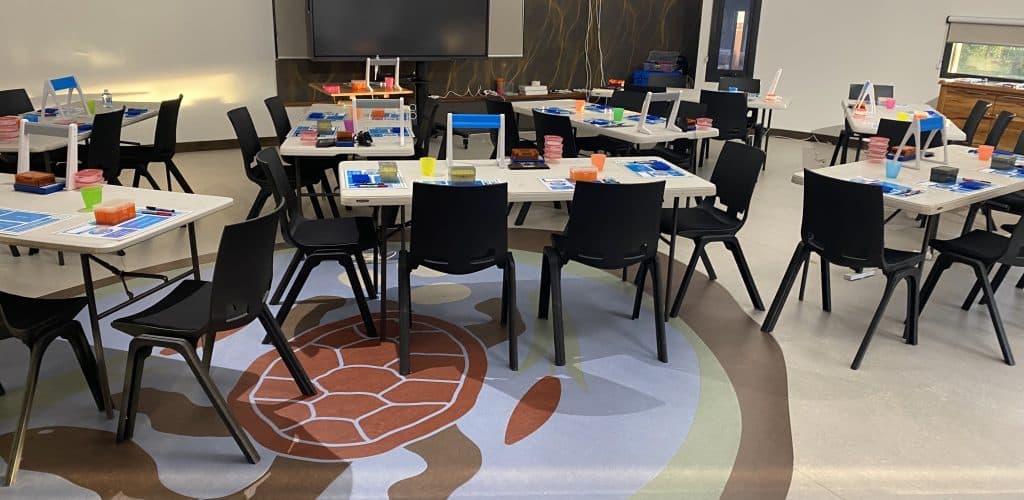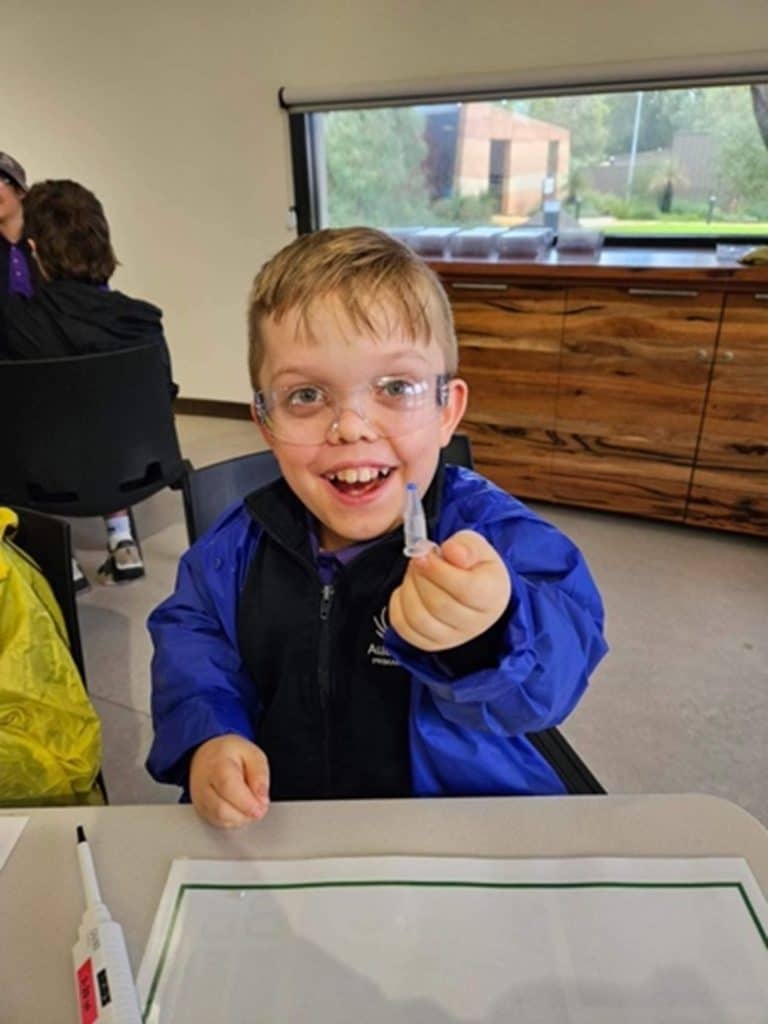BioBarcode Australia exists to provide a unique opportunity to bring DNA technology into classrooms and the community. We use real biotech equipment, link it to real science projects, and feature real scientists as role models for the next generation. Together these provide a unique Enviro-STEM learning opportunity.

We offer a range of activities DNA Discovery Program options geared to both Primary Schools and Secondary Schools (Year 5 through to Year 12).
In addition, we offer a citizen science species identification project, the Australian Barcode for Life Project ™, which everyone can get involved with. The project is based around using the DNA of organisms to identify them before we lose them. It’s a fun, practical way of saving our precious biodiversity using of the most crucial coding language for life on earth – DNA.
We are also open to working with you and your School to create a tailor-made program to suit your specific needs.
For 2025, prices will typically be:
$500 per session for Primary activities
$45 – 60 per student for Secondary activities
NEW for Upper Primary and Lower Secondary
Suitable for PEAC Year 5/6 and Year 7-10 GATE/Academic Extension students
The DNA Detective: A Journey from Lab Techniques to Wildlife Conservation
2 linked incursions
90 minutes each
Incursion 1: Marvellous Micropipettes – Precision Liquid Handling & Colour Mixing
Dive into the world of scientific exploration with our interactive workshop designed exclusively for upper primary and lower secondary students. This session introduces participants to the foundational skills of precision liquid handling using authentic micropipettes. As they engage in a hands-on experience that blends maths and science, students learn the art of micropipetting through colour mixing exercises. This workshop not only equips students with a critical laboratory skill but also paves the way for understanding more complex biological concepts. Participants will get to experience the fun and intricacies of using a micropipette, setting the stage for future scientific discovery of the power of DNA technologies.
Incursion 2: Decoding DNA Mysteries at the Wildlife Hospital
Building on the skills acquired in the first session, this incursion offers students a thrilling opportunity to apply their newfound proficiency in micropipetting to solve a real-world challenge. They embark on a captivating journey to a simulated wildlife hospital, where they will employ DNA profiling techniques to unravel a mystery. This immersive experience not only sharpens students laboratory skills but also highlights the importance of DNA in identifying species. Through this hands-on adventure, students gain practical insights into the role of genetics in conservation and wildlife management.
Students begin their journey as young molecular scientists, capable of making significant contributions to our understanding of biodiversity.



Primary ENVIRO-STEM Learning Activities
Suitable for PEAC/Extension level students, Year 5/6
Moving Miniature Molecules with a Micropipette
Incursion; 90 minutes
A fun exploration activity introducing students to a micropipette, the tool used by DNA scientists globally to handle tiny volumes! Students’ maths skills are put to the test as they learn how to transfer tiny volumes of liquids and then finish with a cool artistic use for these amazing authentic 21st century science tools!


Secondary ENVIRO-STEM Learning Activities
BioBarcode Secondary Activities will be available in early 2025
Please contact us via the website for more details
DNA Wildlife Detectives
Yr 7-10; Incursion OR Excursion (The Wetland Centre, Cockburn);
Half day (3 hours)
This totally hands on activity introduces students to the exciting world of DNA/Forensic Science.
Scenario: Resident wildlife at the local animal hospital have routine tests to make sure they are healthy. When some of the test vials labels are lost, using DNA from each sample can help identify the owner of the sample.
Activity: Students match samples to the correct animal by comparing the DNA profile to a data base of known animal DNA profiles – as done by real scientists!


Citizen Science – Australian Barcode for Life Project ™
Yr 7-10; 20 hours (Co-Curricular/After School Club)
To save biodiversity, we need to know what’s there!
Students are introduced to the first Australian Citizen Science project that allows them to help genetically identify and contribute to our scientific databases.

DNA Barcoding – 21st Century Classification
Year 11 ATAR Biology (NEW FOR 2024!) or Yr 12 General Biology
Unit 1 – Classification
Incursion; 4 hours (half day simulation of all steps) or 5 hours extended version to have specimens sequenced)
A hands-on exploration the molecular classification technique of DNA barcoding – a laboratory technique that uses the unique genetic code of an organism to classify it. Students extract and amplify the DNA of school yard species, check results using electrophoresis and explore the outcome of sequencing the specimen using bioinformatics tools.

Koala Diet Demystified

Year 12 ATAR Biology
Unit 3 – Mutation
Incursion; 3 hours (half day)
The recent sequencing of the Koala’s genome revealed fascinating new knowledge that answers the frequently asked question of why Koalas can survive almost exclusively on eucalyptus leaves.
Students use this knowledge to solve the identity of 2 unknown marsupial samples in this hands-on, laboratory-based investigation. Students prepare and run a PCR and visualise the results using gel electrophoresis. This activity is accompanied by practical and written assessments with marking keys.
Cystic Fibrosis – Carrier Conundrum
Year 12 ATAR Human Biology
Unit 4 – Mutations
Incursion; 3 hours (half day)
Cystic Fibrosis is a genetically inherited disease that results from a mutation in the CFTR gene.

In this laboratory-based investigation, students are given two DNA samples from newborn twins for genetic testing. Students will use PCR to amplify the CFTR gene from these DNA samples and determine if they contain a full length CFTR gene or mutated gene, containing a deletion in the genetic sequence that causes Cystic Fibrosis. They will then visualise the PCR products using gel electrophoresis. This activity is accompanied by practical and written assessments with marking keys.
